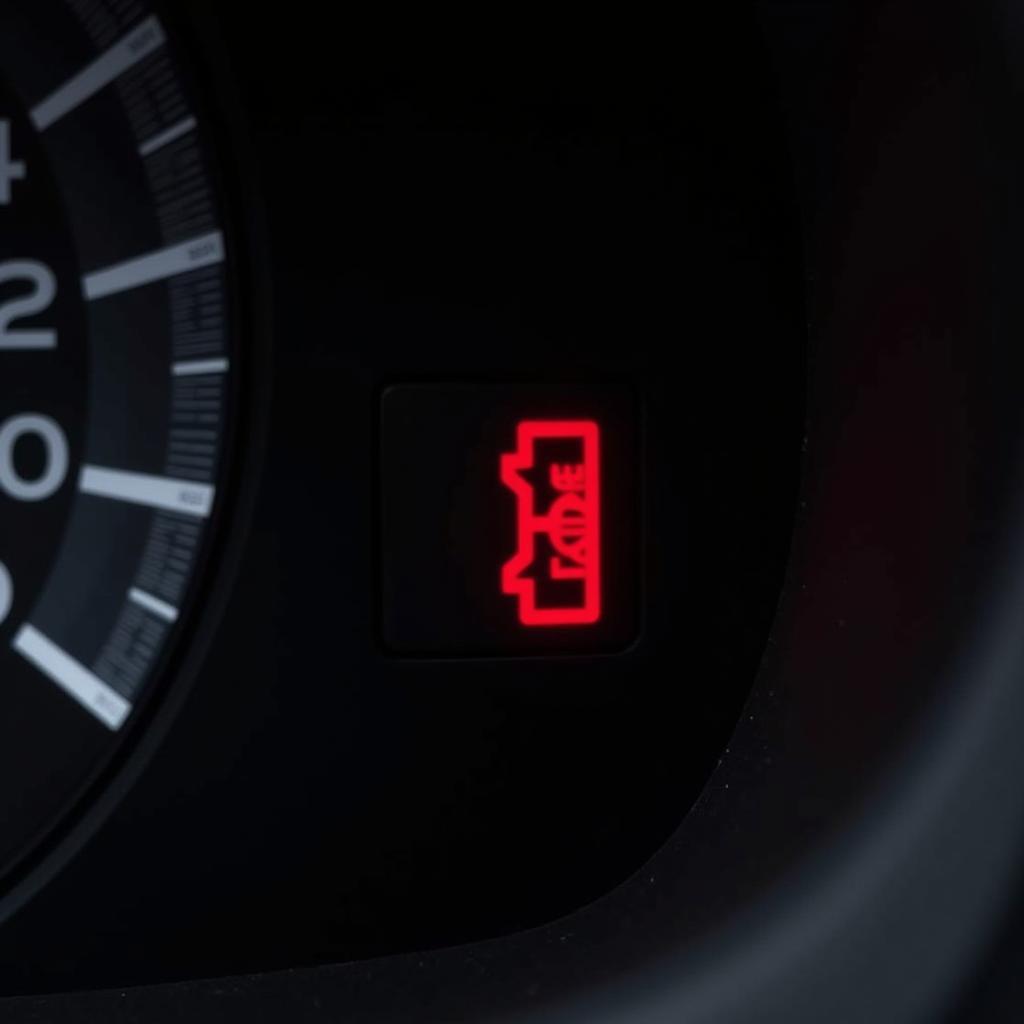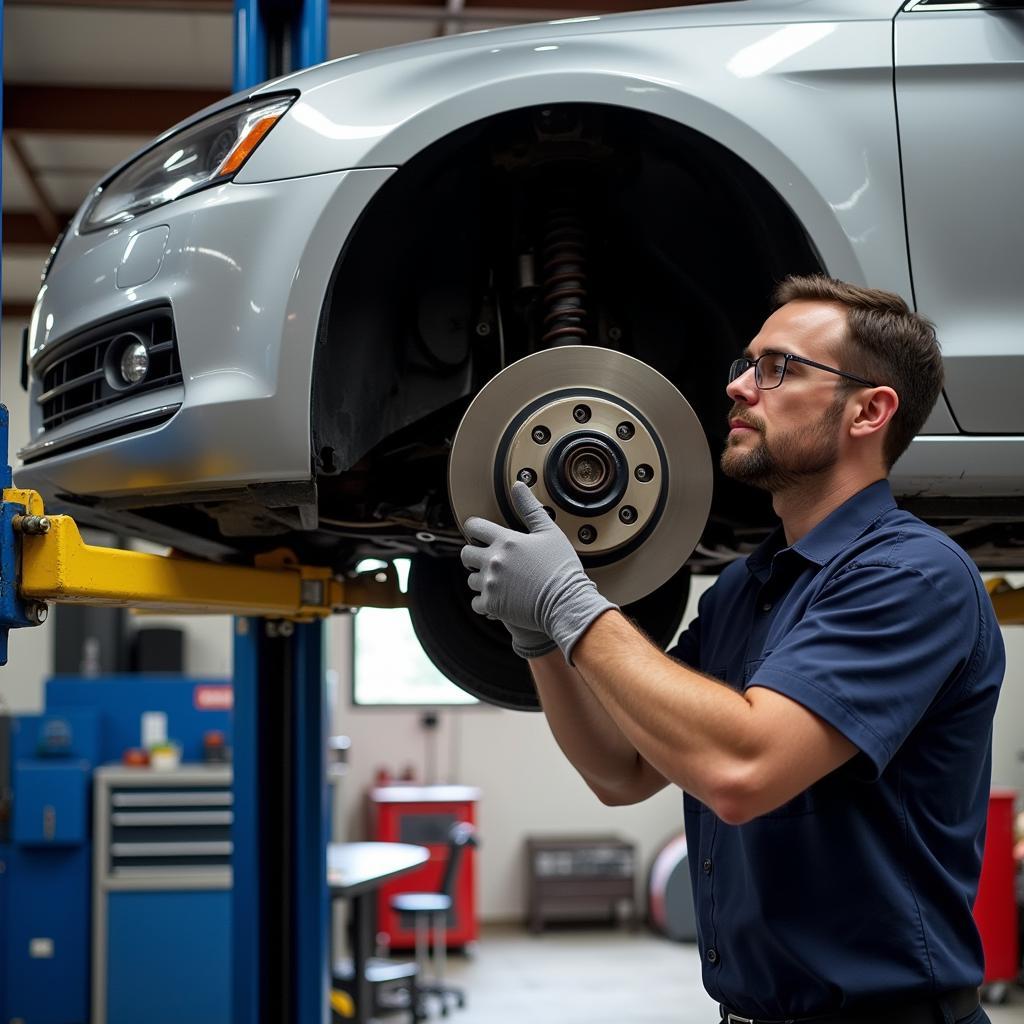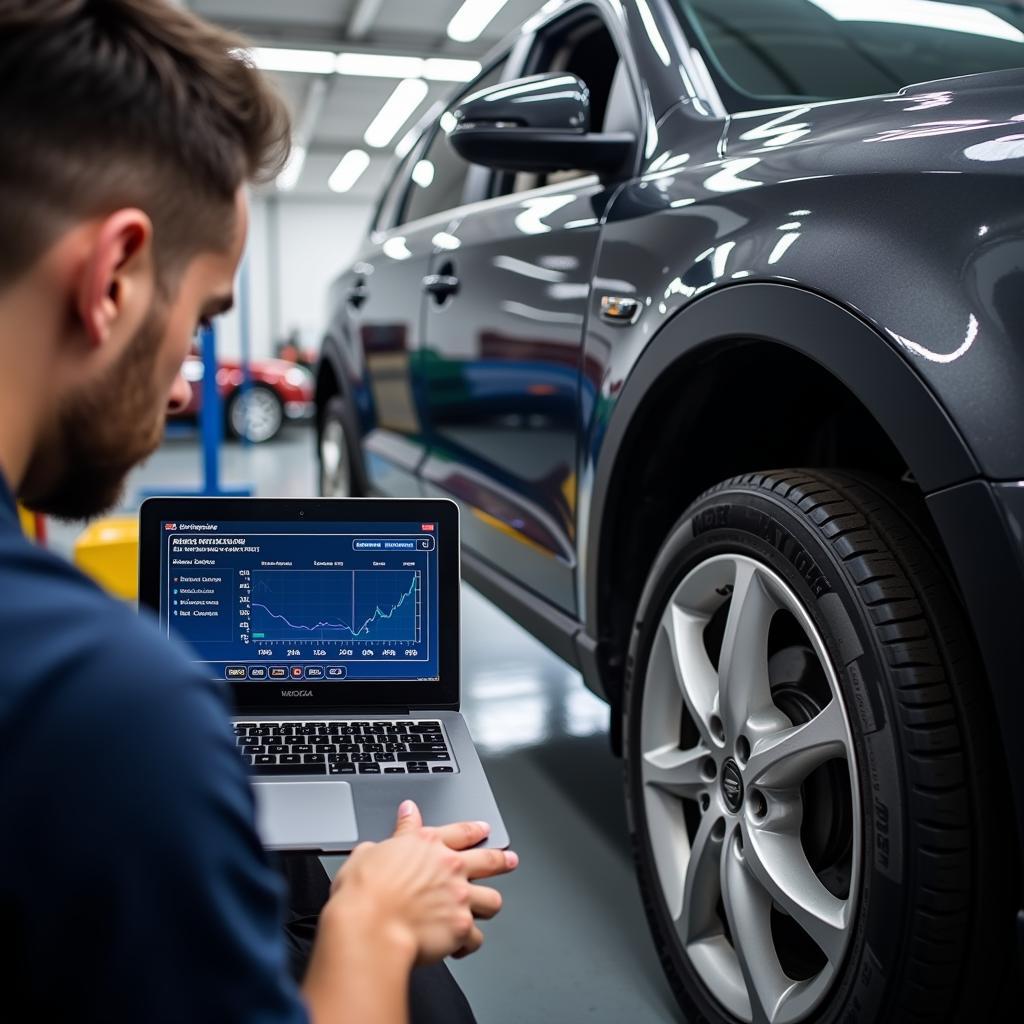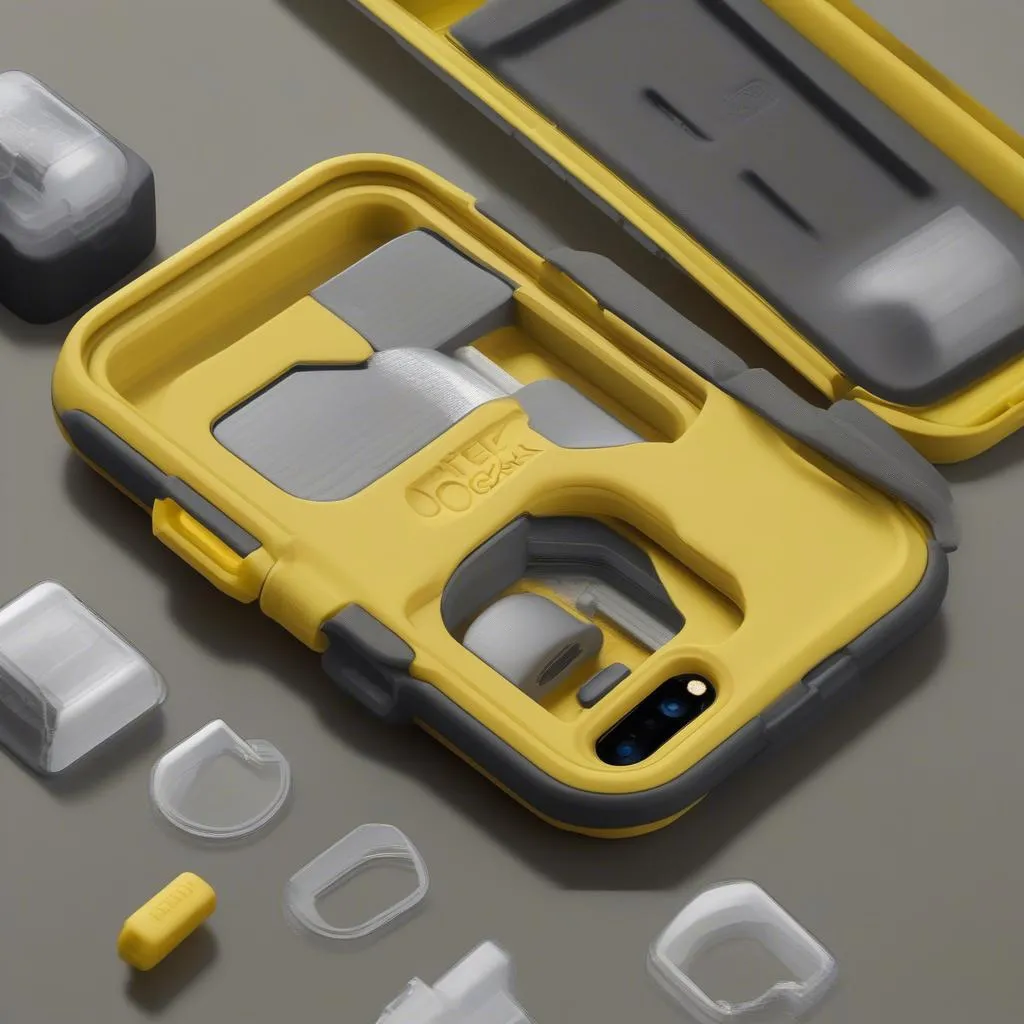The brake warning lamp is a crucial safety feature in your vehicle. Understanding the brake warning lamp meaning can help you diagnose and address potential brake system issues promptly, ensuring safe driving conditions. This guide will provide a comprehensive overview of the brake warning lamp, its various meanings, and how to respond when it illuminates.
One common cause for the brake warning lamp to illuminate is low brake fluid. Check your brake fluid reservoir immediately. If the level is low, it may indicate a leak in your brake system, requiring professional attention. See a mechanic as soon as possible if this is the case. genuine vw warning lamp fasten belts brake describes a similar situation with a VW.
What Does the Brake Warning Lamp Indicate?
The brake warning lamp, typically a red symbol resembling an exclamation point within a circle or parentheses, can signal several potential problems. Its primary purpose is to alert you to critical issues within the braking system.
- Low Brake Fluid: This is the most common cause. A leak in the system can lead to a drop in brake fluid, compromising braking performance.
- Parking Brake Engaged: The lamp may also illuminate if the parking brake is partially or fully engaged. This is usually accompanied by a chime or audible warning.
- ABS Malfunction: A malfunction within the Anti-lock Braking System (ABS) can trigger the warning light. This could indicate a problem with the ABS sensor, pump, or control module.
- Brake System Failure: In some cases, the light can indicate a more serious issue, such as a complete brake system failure. This requires immediate attention and you should not drive the vehicle.
 Brake Warning Light on a Car Dashboard
Brake Warning Light on a Car Dashboard
Troubleshooting the Brake Warning Lamp
Identifying the specific cause requires systematic troubleshooting. Here’s a step-by-step guide:
- Check the Parking Brake: Ensure the parking brake is fully released.
- Inspect Brake Fluid Level: Check the brake fluid reservoir. If it’s low, add brake fluid to the recommended level.
- Look for Leaks: Examine the brake lines, calipers, and wheel cylinders for any signs of leaks.
- Test the Brakes: If the fluid level is adequate and there are no apparent leaks, carefully test the brakes in a safe environment.
- Consult a Professional: If the problem persists, consult a qualified mechanic for a thorough inspection and diagnosis.
 Mechanic Inspecting a Vehicle's Brake System
Mechanic Inspecting a Vehicle's Brake System
Importance of Addressing the Brake Warning Lamp
Ignoring the brake warning lamp can have serious consequences. Delayed action can lead to:
- Reduced Braking Performance: Low brake fluid or other issues can significantly reduce braking effectiveness, increasing stopping distances.
- Complete Brake Failure: In extreme cases, ignoring the warning can result in complete brake failure, leading to a loss of control and potential accidents.
- Costly Repairs: Addressing the issue early can prevent further damage and potentially reduce repair costs.
“Promptly addressing the brake warning lamp is essential for maintaining safety and preventing costly repairs,” advises John Miller, a certified automotive technician with over 20 years of experience. He emphasizes, “Don’t underestimate the importance of a functioning brake system. It’s your vehicle’s most critical safety feature.”
brake light warning light offers some additional information on brake related warning lights.
Remote Diagnostics and Software Solutions
Modern vehicles often utilize sophisticated electronic brake systems. Remote diagnostics and software solutions, like those offered by specialized automotive technicians, can sometimes identify and address software-related brake issues remotely. These services can be particularly helpful for diagnosing complex electronic problems.
 Technician Performing Remote Diagnostics on a Car's Brake System
Technician Performing Remote Diagnostics on a Car's Brake System
engine diagnostics warning light seat ibiza provides a specific example of diagnostic solutions applied to a Seat Ibiza. Understanding the various warning lights, such as the brake warning light, is vital for safe operation.
Conclusion
The brake warning lamp is a vital safety indicator. Understanding its meaning and taking appropriate action can prevent serious accidents and costly repairs. Remember to check your brake fluid regularly, and never ignore the brake warning lamp. Your safety and the safety of others on the road depend on it. If you’re unsure about diagnosing or fixing the problem yourself, always consult a qualified mechanic.
FAQ
- What should I do if the brake warning light comes on while driving? Safely pull over to the side of the road and assess the situation. Check the parking brake, brake fluid level, and look for leaks. If the problem persists, contact a mechanic.
- Can I drive with the brake warning light on? It is not recommended to drive with the brake warning light on, as it indicates a potential problem with your braking system.
- How often should I check my brake fluid? It’s good practice to check your brake fluid level at least once a month.
- What color is the brake warning light? The brake warning light is typically red, indicating a serious issue.
- Is the brake warning light the same as the ABS light? While both relate to the braking system, they are separate lights. The ABS light specifically indicates a problem with the Anti-lock Braking System.
- What does a flashing brake warning light mean? A flashing brake warning light often signals a more serious problem with the ABS system and requires immediate attention.
- Can low brake pads cause the brake warning light to come on? In some vehicles, worn brake pads can trigger the brake warning light. This is often accompanied by a screeching sound when braking.
brake warning lamp hmmwv discusses brake warning lamps in a different context. which valve illuminates the brake warning lamp provides more technical information about the inner workings of the brake warning lamp system.

